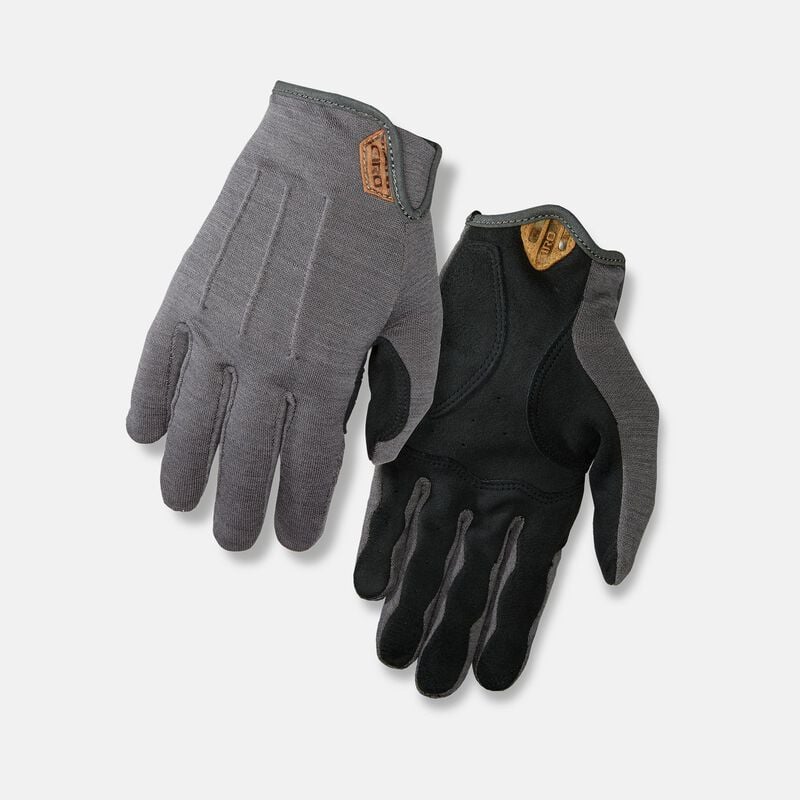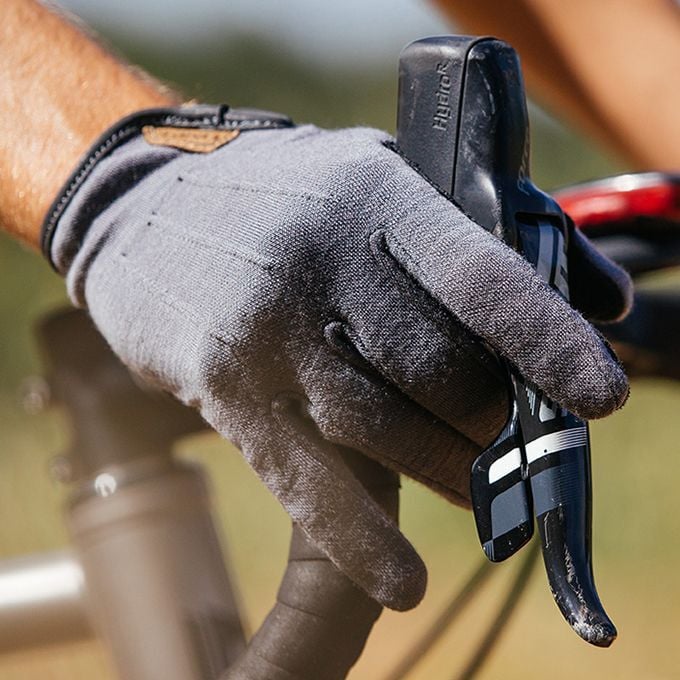The Benefits of Wool in Cycling Gloves
Wool cycling gloves offer unmatched comfort and warmth for riders. Unlike synthetic materials, wool naturally regulates temperature, keeping hands warm in cold conditions yet breathable when it heats up. Wool fibers have a unique ability to wick moisture away from the skin. This keeps hands dry and comfortable, especially during long rides. Even when wet, wool retains its insulating properties, an essential feature for unpredictable weather. Another advantage is wool’s durability. Wool fibers can bend thousands of times without breaking, meaning these gloves can withstand the wear and tear of cycling. These gloves also have a natural resistance to odors, which is great for cyclists who ride frequently. One of wool’s lesser-known benefits is its ability to reduce static electricity. This ensures a smoother ride with less irritation. Choosing wool cycling gloves is an investment in both comfort and performance for any level of cyclist.

Key Features to Look for in Wool Cycling Gloves
When hunting for the perfect pair of wool cycling gloves, certain features are non-negotiable. Here’s what to keep in mind:
Material Quality
High-quality wool is a must. It will give you the warmth and breathability your hands need. Look for gloves with a high percentage of wool for the best performance.
Grip and Dexterity
A secure grip is essential for safe cycling. Opt for gloves with textured palms and fingers. This enhances grip and bike control. Also, make sure they allow for easy finger movement.
Comfort and Fit
Comfort is key for long rides. Gloves should fit snugly but not too tight. They must allow your hands to move freely without cutting off circulation.
Insulation Type
Different grades of wool provide varying levels of insulation. Choose the thickness based on the typical weather you ride in.

Wrist Closure
A good wrist closure keeps the gloves in place and prevents cold air from entering. Look for adjustable straps or elastic wrists for a secure fit.
Extra Features
Some gloves come with additional features such as touch screen compatibility or reflective elements. Consider which extras are important for your cycling needs.
By focusing on these features, you can find wool cycling gloves that suit your needs and enhance your riding experience.
How to Choose the Right Size and Fit
Choosing the right size and fit for your wool cycling gloves is crucial. It ensures comfort and improves bike handling. Here’s how to get the perfect fit:
Measure Your Hand
Start by measuring around your hand at the widest point. This is usually just below the knuckles. Make sure to measure without including the thumb and wrap the measuring tape snugly around your hand. Compare this measurement to the size chart provided by the manufacturer to find your size.

Check for Snug Fit
A snug fit is important for a pair of cycling gloves. They should not be too tight, cutting off circulation, or too loose, causing slippage. The gloves should allow for normal hand movement and flexibility.
Try Them On
If possible, try on different sizes. This will help you feel how they fit and stretch. Make a fist and stretch your fingers to ensure there is no tightness or discomfort.
Look for Adjustable Features
Some gloves have adjustable straps or elasticated wrists. These features can help to achieve the best fit, especially if your hand size is in between the standard sizes.
Consider Glove Length
The length of the glove is important for keeping your wrists warm. Gloves that extend a bit past the wrist are ideal for avoiding exposed skin when you bend your arms.
By careful measurement and consideration of fit, you can select wool cycling gloves that are both comfortable and functional for your cycling adventures.
Comparing Wool and Synthetic Materials for Cycling Gloves
When considering cycling gloves, material choice is key. Wool and synthetic fibers are common options. Each has its strengths and limitations. Here’s a quick comparison:
Warmth and Insulation
Wool is superior for natural warmth. It insulates well even when damp. Synthetics often rely on man-made insulation which may not perform as well in wet conditions.
Breathability and Comfort
Wool is breathable, keeping hands at a steady temperature. Synthetics may not allow as much air flow. This could lead to sweaty hands on long rides.
Durability and Wear
Synthetics are strong and often resist abrasion well. Wool is also durable, but may need more care to maintain its condition.
Moisture Wicking
Wool naturally wicks away moisture. Synthetics can also wick moisture but may need special treatments to do so effectively.
Fit and Dexterity
Both materials can offer good fit. The key is in the glove design. Synthetics might offer stretchier fabrics for snug fits.
Environmental Impact
Wool is a renewable resource and biodegradable. Synthetics are usually derived from oil and take longer to break down.
Price
Wool gloves may cost more due to the natural material. Synthetic gloves can be less expensive but might sacrifice some qualities.
Overall, wool cycling gloves excel in warmth and eco-friendliness. Synthetics may offer better abrasion resistance and a lower price point. Consider your priorities, like warmth, comfort, and sustainability when choosing. Both materials have a place in a cyclist’s wardrobe, depending on their needs.
Maintenance Tips for Wool Cycling Gloves
Proper care ensures your wool cycling gloves last longer and stay in good condition. Here’s how to maintain them effectively:
Washing Instructions
Wool gloves need gentle washing to avoid damage. Wash them by hand in cold water with a mild detergent. Do not wring them out as this can distort the shape. Instead, gently squeeze the water out.
Drying Method
After washing, lay the gloves flat on a towel. Roll the towel up with the gloves inside to absorb the water. Do not hang or use a dryer as this can shrink the wool.
Storage Tips
Store your gloves in a cool, dry place. Avoid placing them in direct sunlight or near heat sources. To prevent moths, consider using natural repellents like cedar blocks.
Dealing with Odors
Wool is resistant to odors, but if they do occur, air them out. For persistent smells, use a specialized wool cleaner that freshens without harming the fibers.
Repairing Minor Damage
Small holes or tears? Patch them up promptly. Use a darning needle and wool yarn that matches the gloves for discreet repairs.
By following these maintenance tips, your wool cycling gloves will be ready for each ride, providing warmth and comfort throughout your cycling journeys.
Top Recommended Wool Cycling Gloves Models
When it comes to choosing wool cycling gloves, the options can be overwhelming. To simplify your search, here are top recommended models that stand out in terms of quality, comfort, and performance. Each one incorporates the essential features of high-quality wool, excellent insulation, and durability while offering their unique advantages. Remember to check that the glove size fits you perfectly for maximum benefit.
Giro Wool Merino Gloves
Giro’s Merino gloves are a hit for their blend of quality and function. They provide great insulation and a comfortable fit, with a grippy palm surface for better bike handling.
Castelli Estremo Winter Gloves
If you’re cycling in freezing conditions, consider Castelli Estremo. They mix wool with other materials for extra warmth and have a windproof design to keep the chill out.
Rapha Deep Winter Gloves
For the cyclist facing harsh winters, Rapha Deep Winter gloves are worth checking out. These gloves have a padded insulation layer and are water-resistant, making them ideal for wet, cold rides.
Ibex Merino Wool Gloves
Ibex offers a simple yet effective glove that focuses on the natural benefits of Merino wool, ensuring breathability and moisture wicking are at their best.
Smartwool Ridgeway Gloves
Smartwool Ridgeway gloves are known for their durability and versatility. They’re perfect for those who need gloves that can withstand a wide range of activities beyond cycling.
Be sure to weigh the pros and cons of each model against your personal needs and the typical weather conditions you encounter. High-quality wool cycling gloves make a significant difference to your comfort and performance on the bike.
The Impact of Weather Conditions on Your Glove Choice
Choosing the right wool cycling gloves isn’t just about the features, quality, or fit. Weather plays a major role in your selection process. The type of wool and the glove design should match the conditions you often face.
Cold and Dry Conditions
In cold and dry climates, thick wool gloves are your best friend. Look for models with ample insulation to keep your hands warm. Make sure they fit well to prevent any cold air from entering.
Wet Weather
For wet weather, go for wool gloves that have water-resistant properties. Gloves that can maintain insulation when damp are essential. Wool’s natural wicking ability is also a plus.
Mild Weather
On milder days, a lightweight wool glove provides enough warmth. Breathability is key here to prevent sweating. Thin wool gloves can offer both comfort and a good grip.
Extreme Conditions
In extreme cold or wet conditions, consider gloves with a blend of wool and other materials. These can give additional protection from the wind and rain while still benefiting from wool’s natural advantages.
By assessing the common weather conditions you cycle in, you can narrow down your wool cycling glove options efficiently. These considerations ensure that every ride is comfortable, no matter the weather.
Wool Cycling Gloves for Different Types of Riding
Choosing the right wool cycling gloves means considering the type of riding you’ll be doing. Different styles suit different needs, from casual commutes to intense off-road adventuring. Here’s how to pick the best wool cycling gloves for various cycling disciplines:
Road Cycling
For road cyclists, aerodynamics and speed are important. Light, snug-fitting wool gloves offer warmth without added bulk. Look for those with good grip for handling at high speeds.
Mountain Biking
Mountain bikers need durability and extra protection. Choose gloves that have reinforced padding. They should withstand rough trails and protect against scrapes and falls.
Commuting
Commuters prioritize comfort and convenience. Gloves with a good fit and smart features like touch screen fingertips are ideal for the daily ride.
Touring
Long-distance riders need gloves that resist wear. Look for high-quality, dense wool that provides comfort on lengthy trips. Padding helps with fatigue from continuous handlebar pressure.
Racing
Racers require gloves that enhance performance. Options with aerodynamic design and minimalistic padding are best. They should not restrict hand movement.
Leisure Riding
For leisurely rides, prioritize comfort and style. Wool gloves that keep you warm and look good are your go-to.
Cyclocross
This discipline involves varying conditions. Gloves that have water resistance and offer a good grip in muddy situations are crucial. The ability to quickly put them on and off is also beneficial.
Wool cycling gloves come in many varieties. Consider your typical riding style and pick gloves that match it. This ensures comfort, performance, and enjoyment on every ride. Remember, the wool content in the gloves contributes greatly to thermal regulation and moisture management, key aspects for any cyclist. Be sure to choose a pair that balances these features with the specific demands of your cycling activities.



